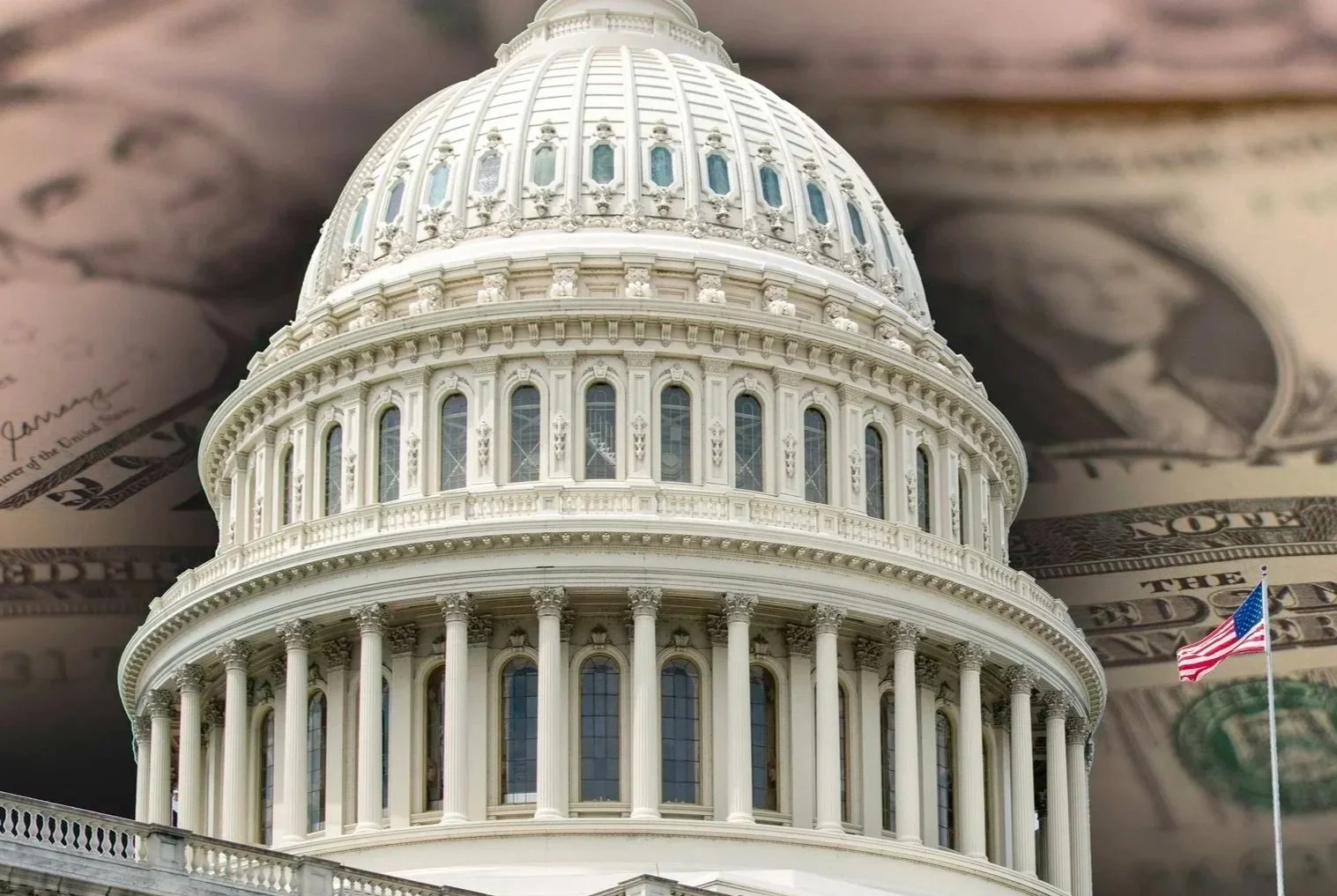(OBBB) One Big Beautiful Bill - Turning Policy Into Portfolio Strategy
“I believe money is like water in a reservoir—it flows to wherever it will receive the greatest return, adjusting for taxes, risk, and liquidity.”
- Bruce Nollenberger
One Big Beautiful Bill and What It Means for Your Money
There's been a lot of talk about the new tax and spending bill—informally known as the “One Big Beautiful Bill” (OBBB). While headlines tend to dramatize, our focus is simple: what does this actually mean for smart, long-term investors? And how can you take advantage of it—rather than just react to it?
At Nollenberger McCullough, we work with individuals, families, business owners, and nonprofit boards who care about preserving wealth and making it grow. If you’ve been wondering how current policy shifts might impact your portfolio or planning strategy, we invite you to take a closer look.
What’s Locked In and Why It Matters
OBBB makes permanent some of the most important parts of the 2017 Tax Cuts and Jobs Act (TCJA).
These include:
Lower marginal tax rates
An increased standard deduction
Current long-term capital gains treatment
With more stability in the tax code, we can make smarter long-term decisions around Roth conversions, retirement withdrawals, and investment tax management. Fewer moving parts = fewer surprises = stronger outcomes over time.
What’s Temporary and Worth Acting On
Other key elements of the bill are temporary, expiring between 2028 and 2030. These include:
Bonus depreciation
Enhanced charitable deductions
A new class of tax-advantaged savings vehicles
SALT
SALT (Section 164):
The OBBB increases the limit on the 2025 federal deduction for state and local taxes (SALT) from $10,000 to $40,000. In 2026, the cap will increase to $40,400, and then increase 1% annually, through 2029. In 2030, the cap will revert to the current $10,000.
This is especially relevant for clients in high tax states like California, where the old $10,000 cap often meant leaving deductions on the table.
These aren’t long-term changes—but they open short-term windows for high-impact action. For example:
A business owner might accelerate capital investments to maximize current write-offs.
A high-income individual may front-load charitable giving while deduction caps are higher.
Someone who is planning on retiring soon might want to consider using this window to execute a tax-efficient Roth conversion.
The message here is clear: some of the best planning opportunities won’t last forever.
How We Help Clients Apply This Strategically
We don’t chase headlines. We interpret them—and build them into real-world, customized plans. Whether that means helping a family optimize retirement income, working with a business owner to navigate depreciation rules, or advising a nonprofit board on surplus reserves, our approach is consistent: Disciplined, tax-aware, and focused on long-term goals.
For Individuals
Roth conversion timing
RMD strategies under evolving tax law
Tax-efficient charitable giving
Coordinated planning with their CPAs for asset location and after-tax return
For Business Owners
Whether to accelerate deductions under bonus depreciation rules
Entity structure optimization (S-Corp vs. C-Corp) under updated thresholds
Opportunities to reduce taxable income without compromising liquidity
What This Means for High-Net-Worth Investors
One of the biggest wins for high earners is the permanency of reduced marginal tax rates. If you’ve just exited a business, taken a sabbatical, or are between liquidity events, there may be an ideal opportunity to:
Lock in lower tax rates through partial or full Roth conversions
Transfer assets more efficiently through gifting strategies
The bill also extends bonus depreciation—especially relevant for investors with income-generating real estate or business interests. And it preserves higher estate and gift tax exemptions, which had previously been set to sunset in 2026. As of now, the exclusion is scheduled to rise to $15 million (plus inflation) starting in 2026. That means: You have time—but not too much—to make large, tax-advantaged wealth transfers while the window is still open.
What This Means for Associations & Foundations
If you sit on a nonprofit or association board, the OBBB may allow for better near-term planning. Lower tax rates for UBI (unrelated business income) continue, while bonus depreciation can significantly reduce the cost of capital upgrades.
We help organizations:
Review and revise investment policy statements
Reevaluate how cash reserves are allocated
Explore tax-advantaged uses of surplus income
A Few Key Takeaways
Even permanent tax laws should prompt a second look at your current strategy.
Temporary provisions open strategic windows—but require timely action.
While tax policy may change, a well-built plan stays adaptable and consistent.
Is Your Plan Built for What’s Ahead?
In a year like this, many investors wonder: Should I pause? Should I wait?
We believe the better question is: Is my plan still serving me under the current rules?
If you’re managing a portfolio, running a business, or serving on a nonprofit board, we’d be happy to share what we’re seeing—and how we’re helping others stay positioned, not just protected.
Let’s Start the Conversation
Whether you’re revisiting your investment plan, preparing for a major life change, or simply curious how these tax provisions could impact your wealth—we’re here for a candid, pressure-free conversation.
We also facilitate family financial meetings, helping loved ones align around long-term goals and key planning decisions. If that’s something your family could benefit from, let’s set one up.
You don’t have to wait for a crisis—or a sunset provision—to act.
All the best,
Bruce and Leon
Nollenberger McCullough Investment Advisors
Performance - Trust - Experience
100 Shoreline Highway Bldg B, Suite 380
Mill Valley, CA. 94941
220 Newport Center Drive #11-375
Newport Beach, CA 92660
415-956-8700 or 415-287-5100


